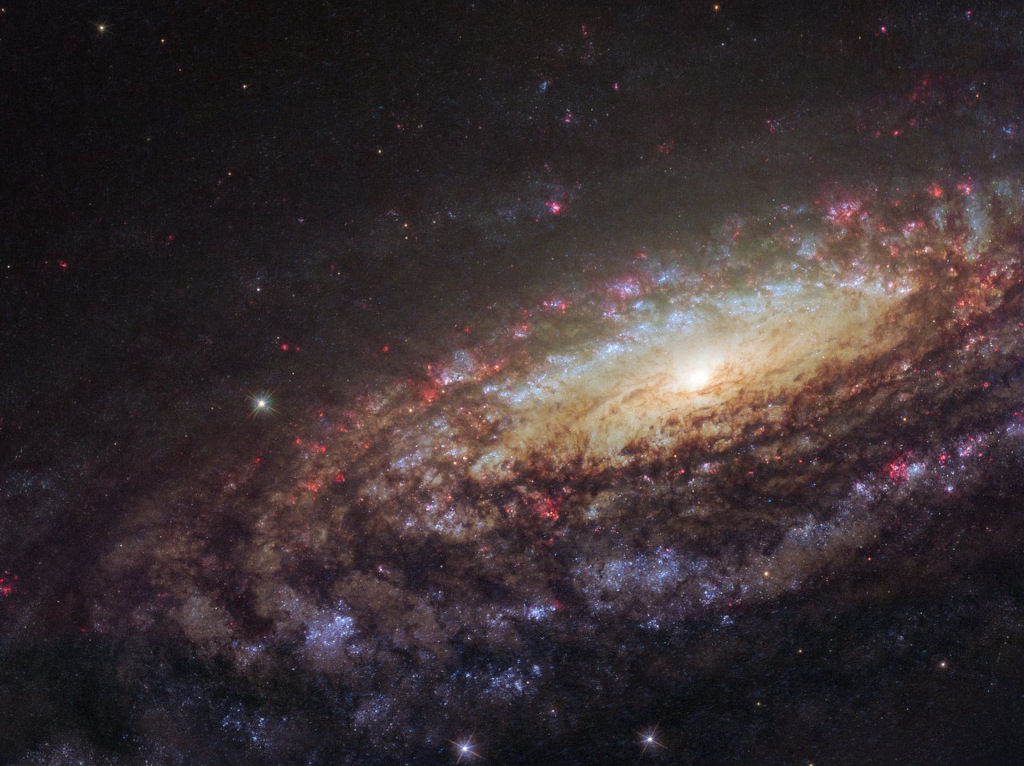2022年9月22日
NGC 7331 Close Up
Image Credit & License: ESA/Hubble & NASA/D. Milisavljevic (Purdue University)
Explanation: Big, beautiful spiral galaxy NGC 7331 is often touted as an analog to our own Milky Way. About 50 million light-years distant in the northern constellation Pegasus, NGC 7331 was recognized early on as a spiral nebula and is actually one of the brighter galaxies not included in Charles Messier’s famous 18th century catalog. Since the galaxy’s disk is inclined to our line-of-sight, long telescopic exposures often result in an image that evokes a strong sense of depth. This Hubble Space Telescope close-up spans some 40,000 light-years. The galaxy’s magnificent spiral arms feature dark obscuring dust lanes, bright bluish clusters of massive young stars, and the telltale reddish glow of active star forming regions. The bright yellowish central regions harbor populations of older, cooler stars. Like the Milky Way, a supermassive black hole lies at the core of spiral galaxy NGC 7331.
Tomorrow’s picture: ringed planet Neptune
星系NGC 7331特写
影像提供与授权: ESA/Hubble & NASA/D. Milisavljevic (Purdue University)
说明: 庞大美丽的螺旋星系NGC 7331,咸认是我们银河系的翻版。位在北天飞马座内、离我们约5千万光年远的NGC 7331,很久以前就被归类为螺旋星云,而且是18世纪著名梅西耶星表未收录的较明亮星系之一。因为在我们视线方向,这个星系斜对着我们,因此使用望远镜进行长曝光所得的影像,通常具有很强的纵深感。在这幅由哈勃太空望远镜所拍摄的特写影像里,这个星系壮丽的螺旋臂上,有不透光的黝黑尘埃带、大质量恒星聚成的泛蓝明亮星团、和会发出特征泛红辉光的活跃恒星形成区。螺旋星系NGC 7331明亮泛黄的核心区,除了有大群较低温且较年老的恒星之外,也像银河系一样,内部藏着一颗超大质量黑洞。
明日的图片: ringed planet Neptune







